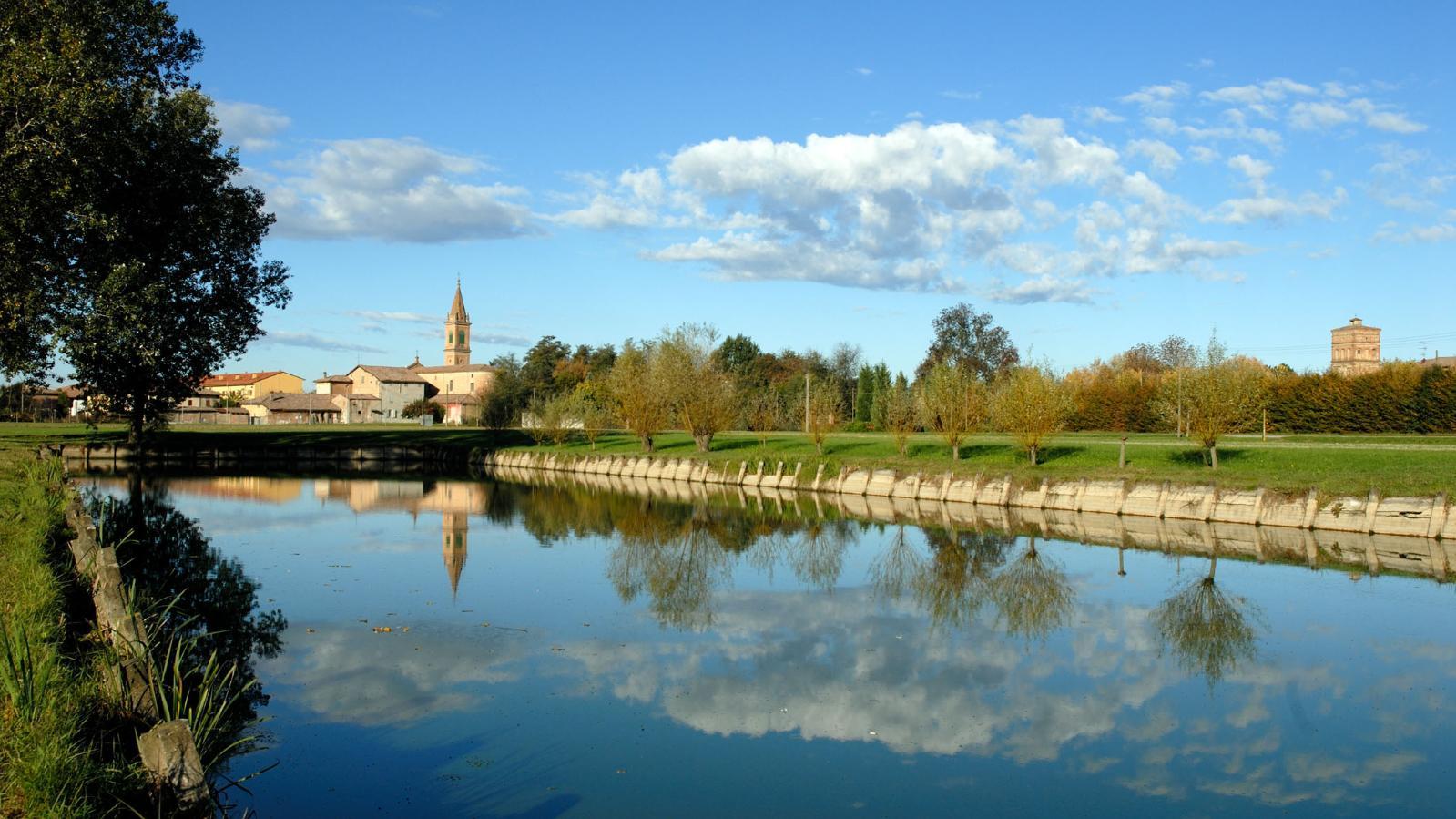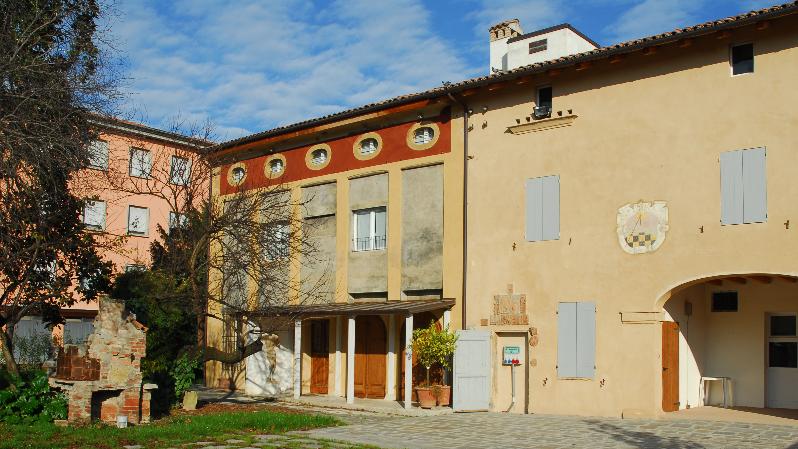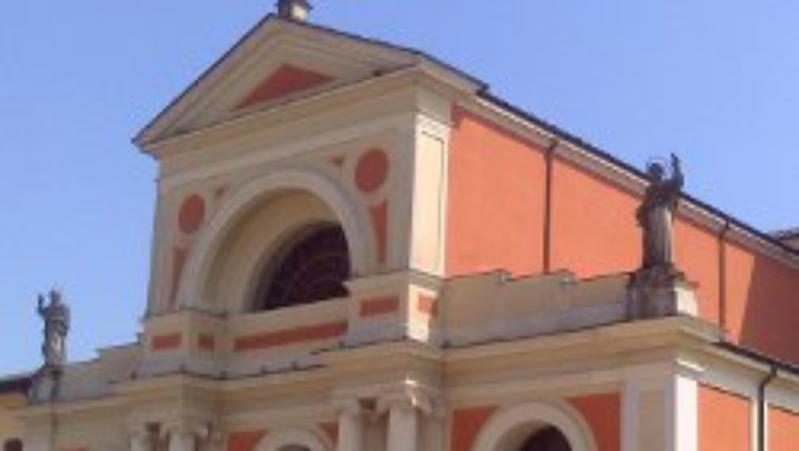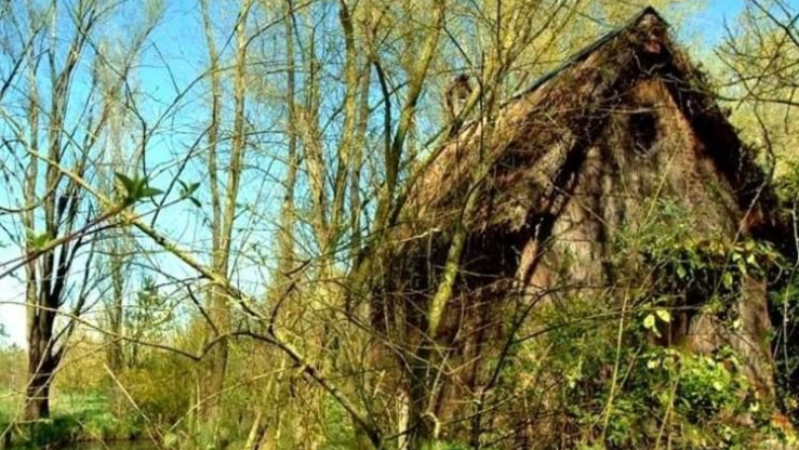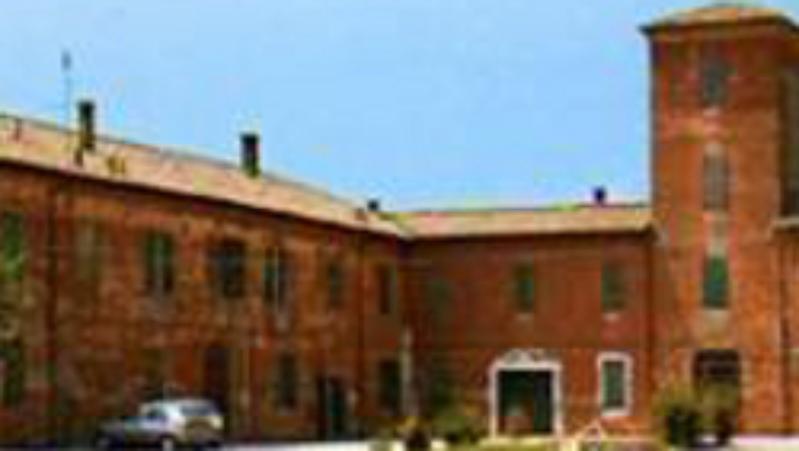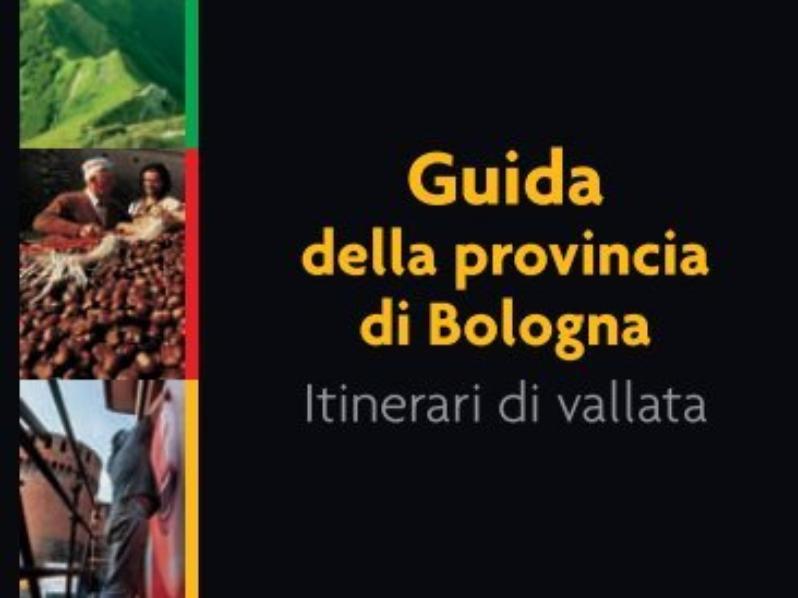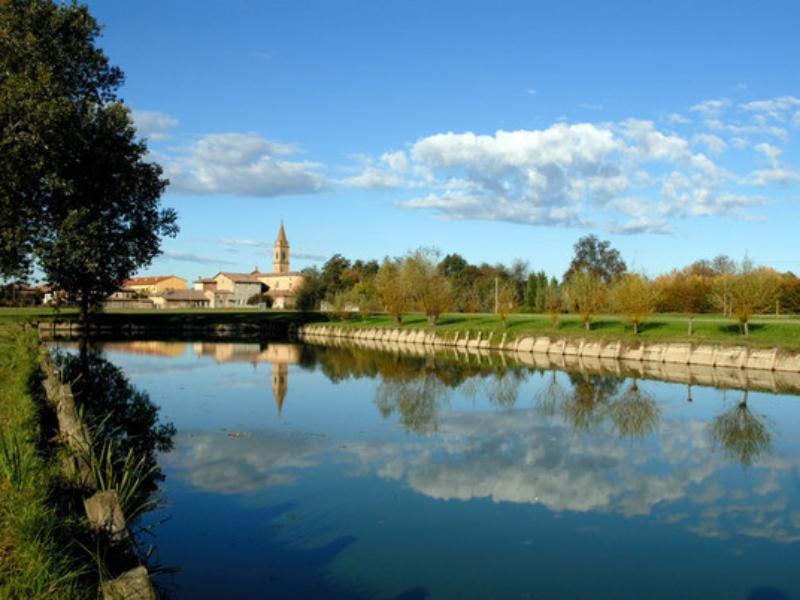
The name comes from San Pietro, its Patron Saint, and from casale, the farm house from which the town expanded.
The first thing to strike you on entering San Pietro in Casale is the beautiful layout of its historical centre, with its Bolognese-style porticoes and elegant ancient buildings.
Of particular note is the 19th-century Church of Santi Pietro e Paolo, and the Romanesque bell-tower, recalling the building's medieval origins. Inside there are interesting paintings from the School of Ferrara dating back to the first half of the 16th century.
A short distance away, there is the municipal park, adjoining the 17th-century Villa Padoa, which has been the seat of the Municipality since 1896 and the Cultural Park of San Pietro in Casale, composed by the Museo Casa Frabboni, the "Mario Luzi" Library and the Teenage Library connected together by the vast rosegarden.
Four cycle tracks starting in the town lead along tarmac and dirt roads into a world rich in small treasures for the attentive traveller.
The cliché of the plains is of a monotonous, unchanging countryside. In fact, it is not like that at all. In the territory of San Pietro in Casale alone, heading off in different directions, you can find notable differences. The territory to the east of the town is characterized by its valley origins, which has today become immense stretches of cultivated fields, as well as nature reserves recreated using the abundant water. The countryside to the west, by contrast, is scattered with noble houses and ancient rural buildings in more modest estates. Here you can also see some of the last traces of the most typical of the cultivation systems of the plains, known as the "piantata padana". The villages around San Pietro are often visible for kilometres for the bell-towers rising up on the plains, some of which are definitely worth a visit.
In Maccaretolo there is the XIV century Church of Sant'Andrea, rebuilt in 1818. Inside there is an altar piece by Alessandro Guardassoni. In Tombe, there is a large building constructed in 1490 by Giovanni II Bentivoglio on the remains of a building from the times of the Antonini Emperors, on the edge of a wide swamp near the border of the State of d'Este, then became part of the Duchy of Galliera.
The Setti road between Maccaretolo and Tombe is perhaps the clearest example of Roman "centuriazione", among those spared by the ruinous floods of the Reno.
In Rubizzano, it is worth visiting the Church of SS. Simone and Giuda, containing paintings by Guardassoni and Trebbi. This is where Pier de' Crescenzi, the 13th-century founder of agronomy, retired at 70 years old. Also notable is Palazzo Bonora, a typical lowland house.
The ancient village of Poggio Massumatico is called Massumatico to distinguish it from the nearby Poggio Lambertini (today called Poggio Renatico), the birthplace of Cardinal Prospero Lambertini, who later became Pope with the name Benedict XIV. In his period, the Benedictine Tunnel was dug, the first step towards the definitive resolution of the problems of the Reno. For centuries, this area had in fact been prone to serious flooding from the river. In Poggetto, you should see the Church of San Giacomo Maggiore, whose altar piece is from the School of Guido Reni, while the apse is probably of Romanesque origins.
Along the stretch of the Navile Canal which crosses the territory of San Pietro in Casale, the right bank has an embankment with "towpaths" that can still be followed. From here you can enjoy a wide view over the countryside. Half-hidden in the vegetation is the 16th-century Ca' Gioiosa, built to house the workers responsible for the water network, which in the 18th century also had a mill.
From an environmental point of view, there are the Areas of Ecological Restructuring created near the "Casone del Partigiano" (Partisan's Guardhouse") and the Nature Reserves near Poggetto and Massumatico. In the Napoleonic period, a new reclamation campaign started the definitive transformation of this land. In the same period, the cultivation of rice was introduced and became characteristic of all the Bolognese plains towards the ancient Po Delta.
More information
- Distance from Bologna: 24 Km.
- Altitude: 18/26 m.
- Inhabitants: 12.202 (updated January 1st 2016)
- Market day: Tuesday
- Patron Saint: San Pietro e Paolo (29th June)
- Hamlets: Asia, Cenacchio, Gavaseto, Maccaretolo, Massumatico, Poggetto, Rubizzano, S.Alberto and San Benedetto
Recurring events
- Antique market: first Saturday of each month.
- San Pietro in Casale Carnival: February.
- Aemiliana, SanPietroInFesta: June.
- Sport Festival: June.
- Festa patronale Santi Pietro e Paolo: June 29th.
- Festa della Madonna di Piazza: second Sunday of September.
- Festa Madonna della Rondine, in Maccaretolo: October.
- Festa Santi Simone e Giuda, in Rubizzano: end of October.
- Sagra del bollito: November.
- Festa di maròn e dal vén: November 11st.
The text is taken from
Guide to the province of Bologna - Valley itineraries
How to get to San Pietro in Casale
By car
- Roads from Bologna: Via Stalingrado, turn left in Via Aposazza, then turn right in Via Shakespeare, keep on going along SS 4 Galliera up to San Pietro in Casale
- Motorways from Bologna: A13 Motorway, exit Bologna-Interporto, take SP 3 Trasversale di Pianura, get onto SP 4 Galliera till San Pietro in Casale
By bus
From the Bologna Bus Station, ATC Public Transport Company (for information on timetables and fares visit www.atc.bo.it):
- Bus n. 97 Bologna-San Giorgio di Piano-San Pietro in Casale-San Venanzio
By train
From the Bologna Central Station (for information on timetables and fares visit www.trenitalia.com): railway line Bologna-Piacenza–Milano, Anzola dell'Emilia stop.
By plane
The Guglielmo Marconi Airport is about 21 km. from San Pietro in Casale.
The BLQ Airport shuttle connects every 15-30 minutes the airport to the city centre and to the central station. Piazza XX Settembre stop to get a bus towards San Pietro in Casale.
Information
URP - Public Relations Office
Address: Via G. Matteotti 154 - 40018 San Pietro in Casale (BO)
Phone +39 051 6669556 | +39 051 666.95.55 | +39 051 666.95.46
urp@comune.san-pietro-in-casale.bo.it
www.comune.san-pietro-in-casale.bo.it
Opening times (winter):
- Mon, Tue, Wed and Fri 8.30am-12.30pm
- Thu 2.30pm-6pm Sat 8.30am-12pm
Opening times (July and August):
- Mon, Tue, Wed and Fri 8.30am-12.30pm
- Thu 8.30am-12.30pm
-
Sat 8.30am-12pm

